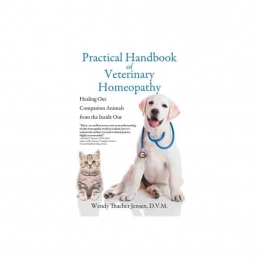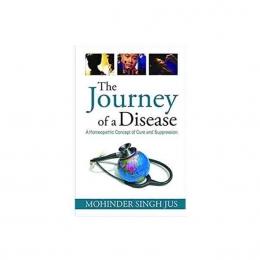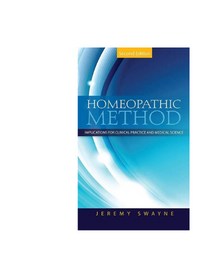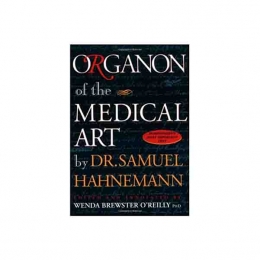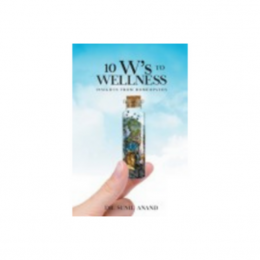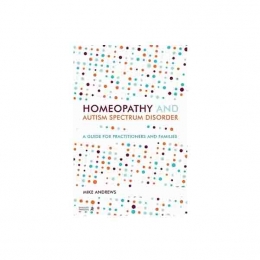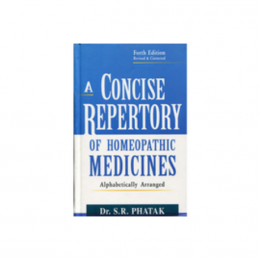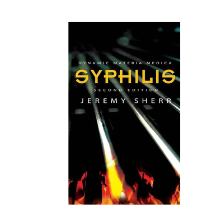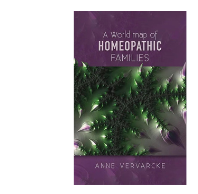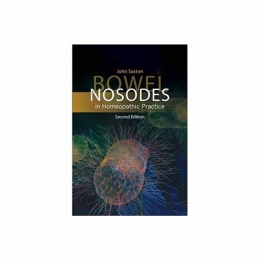Costa Rica Provings - Scholten
Costa Rica proving describes the fifth proving seminar in Costa Rica. It turns out that the proving are getting better over the years. The quality of the proving is becoming more accurate and the essence of the remedy is discovered amore or less broadly. The provers get the Remedy code partially or totally from the proving. The Remedy code is the code as developed in the Plant theory which has been published in Wonderful plants. It is astonishing how accurate they often find the Remedy code, partially or totally. The proving show often new aspect of the remedy or family to which it belongs. In these proving the two remedies from the Piperaceae showed strongly the aspect of the neglect child, but then in a more general way. It showed that the western culture of laying babies in their own bed, far away from the parents is a cultural problem, reflected in the Piperaceae.
Cola - Homeopathic Proving of Cola nitida, Materia Medica, Cases - Bernd Schuster, 1999
The new remedy Cola belongs to the group of drug remedies. Drugs are often used to heighten or expand perception, to enable the user to cross boundaries which Nature has set to the human powers of perception. The drugs cannabis, coca (“sacred plant of the Incas”), cola (“food of the gods”) and peyote (“flesh of God”) are seen as “divine substances” which create a link with the gods and spirits.
This full Hahnemannian proving with 23 participants revealed feelings of invincibility, the idea of being able to carry the whole world on one’s shoulders, or being able to see through the material person into the innermost being or read a person’s thoughts, i.e. mainly divine qualities and abilities which the provers ascribe to themselves, thus demonstrating a delusion of grandeur.
Insatiability is a central idea of the remedy (“I am like a bottomless pit”). The new remedy shows and effect in eating disorders (Insatiability and fear of being poisoned), mania and hyperactivity, disturbance of sugar metabolism, gastrointestinal illness with diarrhoea, problems with self-confidence, depression, sleepiness (fatigue), anxiety dreams and migraine. In Cola patients I have found a history of drug-taking with heroin, LSD and cocaine, a history of dipsomania or food abuse with others.
Bernd Schuster is classical homeopath and psychologist. With Bamboo he added an important remedy to homeopathic Materia Medica. Cola is his second homeopathic proving.
305 pages, paperback
The Dynamics and Methodology of Homoeopathic Provings (Second Edition) - Jeremy Sherr, 1994
“And further, while we were preparing the so-called old medicines we never forgot our position as explorers of the unknown world of results, of effects; never forgetting the groundwork of our healing art, we prepared from time to time new machines also; we made regular provings at least once a year, often twice a year and even three times a year. These provings were the high feasts in our church, and you cannot consider yourselves true members of it without joining these feasts.
Proving is a most wonderful thing, the world has never known its like. We suffer, and we enjoy it; we sacrifice a little of our comfort, and gain years of strength by it; we go to school to learn, and we increase the certainty of the healing art. At the same time, to prove drugs is of all other ways the very best, the nearest and the easiest to learn to master our Materia Medica. It is the way to learn; to observe the art of arts, the principle one on which all others is based.” - Constantine Hering
Excerpt from Introduction: Over the last few years I have completed complete Hahnemannian provings of Scorpion, Hydrogen, Chocolate, Brassica, Germanium, Neon and Adamas. These have provided me with the opportunity to gain a wealth of experience, and thus I offer this work as a catalogue of my knowledge to date, with the aim that it will lead to a greater understanding of the subject and to more provings of quality. To this end I have researched most available sources and combined these with my own understanding gained from conducting provings.
These notes are neither final nor definitive. Rather they are a guide, an assimilation of ideas to be revised and added to. Our science is young and we all have much to learn. I therefore look forward to the comments and ideas of my colleagues.
127 pages, paperback
How Aphorism 27 Changed the World- Bentley
The Organon of Medicine by Samuel Hahnemann contains a treasure of information about every aspect of homeopathy, including Hahnemann's views on best practice and how homeopathy works.
Grant Bentley examines aspects of The Organon in reference to contemporary practice, with focus on its place in relation to scientific thought and universal principles. Through examining natural laws, the author highlights the important strengths of the foundations of homeopathy, while also indicating some aspects of Hahnemannian thinking that are open to new interpretation, in the light of a further 200 years of practice.
Building upon the author's clinical use of natural law in determining miasmatic dominance, How Aphorism 27 Changed The World is an important addition to the homeopathic library.
Grant Bentley has written three other homeopathic books -Appearance and Circumstance, Homeopathic Facial Analysis and Soul & Survival. His methodology Homeopathic Facial Analysis (HFA) is practiced around the world. Grant is a homeopathic practitioner, teacher and scholar, and is currently the principal lecturer of the Victorian College of Classical Homeopathy in Melbourne, Australia.
Behind the Glass Screen - A Homeopathic Survey of Ozone - Anne Vervarcke, 2009
‘Ozone is an essential element of life and Anne Vervarcke’s book, “Behind the Glass Screen: A Homeopathic Survey of Ozone,” is an essential tool for finding Ozone cases in your practice. The extensive research of the substance, Anne Schadde’s proving, and clearly analyzed cases using the Sensation Method make this remedy easy to identify and prescribe. This book is a must-have Materia Medica for your library.’
—Burch, Melissa, CCH, RsHom(NA)
‘The book ozone is like a complete capsule of information about the source as well as the clinical side of ozone. Anne is a good friend and a sensitive homeopath. We hope her hard work helps many readers to pick Ozone cases. They shall now be easy to recognize and not so elusive and distant like the gas itself.’
—Bhawisha & Joshi, Shachindra
‘This book is about ozone, ozone and ozone. There are three stages to this lucid and compelling book. There is the introduction to ozone in the world and in the environment, setting the stage, and then there is a magnificently crafted materia medica picture drawing upon the proving by Anne Shadde and related materia medica as the centrepiece, and then there is a series of compelling cases to illustrate the remedy used in reality. All this is within the modern context of the vital sensation which is reviewed sufficiently so there was a clear framework. By reading this book, you will have both an enjoyable read, and you will be able to introduce ozone into your practice and fill one huge gap in materia medica that has been missing for far too long.’
—Chappell, Peter, FSHom
‘This book is a welcome addition for homeopaths. It confirms the Periodic system analysis and the provings of Ozone. The central role of Oxygen in our Earth system and in the global warming makes this book very interesting.’
—Scholten, Jan
‘Anne Vervarcke’s book Ozone draws on a wide range of resources. She gives a clear chemical understanding of both Ozone and Oxygenium, and weaves together the ideas, hypothesis, insights and intelligence of many modern homeopaths. The book is crowned by Eight Ozone and three Oxygenium cases, many from her own practice, and her method, the AV Method of anamnesis and analysis is explained and used throughout. If you want to understand Ozone, one of the most undervalued remedies of our time, this is the book that says it all.’
—Tree, Jenni
Anne Vervarcke who was trained in Bloemendaal and Amersfoort has a private clinic since 1989. She has been teaching since 1990, in the CKH which she established, and since a few years she is giving seminars in different countries. In Belgium she gives a Post Graduate lectures once a month with live cases. After attending countless seminars, investigating, practicing and teaching for over 15 years, she fully masters the art of homeopathy.
In 1999 she publishe: “Klassieke homeopathie: niet te goloven?!’ and in 2005: ‘250 jaar na Hahnemann’, both in Dutch. She also has another book titled ‘The Charm of Homeopathy’ published by B. Jain Archibel, which is a commentary on problems faced in clinical practice and solutions to them.
174 pages, paperback
Homeopathic Prescribing (2nd edition) by Steven Kayne and Lee Kayne
Originally devised at 36000 feet over Siberia, this book was initially commissioned by the Royal Pharmaceutical Society for practising pharmacists and other health professionals. The second edition has been revised to make it more accessible to everyone and is laid out to make it easy to find the most important information on all aspects of homeopathy quickly and concisely. Part 1 - An introduction to the principles of homeopathy as a self-contained curative system. The basics of anthroposophy, biochemical tissue salts and flower remedies are also explained. Part 2 - 56 flow charts (decision trees) which will help properly target the most appropriate homeopathic remedy for a wide range of commonly seen acute conditions, whether you are an experienced practitioner or newcomer to homeopathy. The charts are complemented by supplementary materia medica notes to further inform your choice of remedy. The majority of remedies referenced in this book are readily available over the counter in pharmacies or online. "This book is one of the best-organised homeopathic works I have ever seen. It gives you confidence; it provides a footing for quick homeopathic action when time is of the essence. No theory, no prolonged intellectual discussion, just a guide to the action needed, here and now." - Ivo Wiesner in the Homeopathic Links Journal
Homeopathic Method by Jeremy Swayne
There can be little doubt that ‘homeopathy works’. For all the controversy surrounding the nature and effect of homeopathic medicines, the clinical outcomes and improvement in wellbeing achieved by homeopathic treatment are consistently good. In many instances they defy the expectations of conventional biomedical treatment, and demonstrate the remarkable extent to which our minds and bodies are capable of self-regulation and self-healing. In this book, Dr Jeremy Swayne unpacks the therapeutic ‘black box’ of the homeopathic method. He describes in detail a process of clinical enquiry and observation that is essentially entirely conventional but that casts a new light on the dynamics of illness and healing. His analysis does not depend upon any a priori assumptions about the activity of homeopathic medicines, but insists that both their effects, and the contextual aspects of the therapeutic process that homeopathy exemplifies and that is so important in all medicine, demand fuller investigation. The implications for the future of clinical practice and medical science are truly profound.
Organon of the Medical Art - Dr Samuel Hahnemann (Translation by Wenda B O'Reilly), 1996
Dr. Samuel Hahnemann, the visionary 19th century physician who first developed homeopathic medicine, distilled his philosophy and practice into the Organon of the Medical Art. This definitive new edition clearly presents his revolutionary system of medical care.
“One of the most important books ever written on homeopathy and holistic medicine.” – Andrew Weil, M.D., Author of Natural Health, Natural Medicine
“This philosophical masterpiece by the founder of homeopathy brilliantly covers all aspects of natural health care.” – Miranda Castro, Author of The Complete Homeopathy Handbook
“This superb edition of the Organon enables Hahnemann’s genius to spread beyond the confines of the homeopathic community – to all who are interested in discovering a gentle, safe, and effective method of healing.” – Catherine Coulter, Author of Portraits of Homeopathic Medicine
“Homeopathic medicine is the most radical and effective system of medicine the world has ever known. Although the Organon was written 200 years ago, it is only now, at the dawn of the 21st century, that its true relevance can be appreciated by all.” – Jeremy Sherr, Director, The Dynamis School of Homeopathy
“The Organon of the Medical Art is a must read for anyone who gives or receives medical care.” – Roger Morrison, M.D., Author of Desktop Companion to Physical Pathology
407 pages, paperback
Homeopathic Prescribing (2nd ed.) - Steven B Kayne, Lee Kayne
Homeopathic Practice offers an overview about homeopathic experience in different parts of the world and from different practising perspectives.
Edited by Steven B Kayne
Homeopathic Practice uniquely approaches the subject of homeopathy by demonstrating how the theoretical principles underpinning practice directly translate to day-to-day practice.
Contributions from international experts highlight how homeopathy is practised in a variety of different environments around the world. Case studies and personal accounts demonstrate the wide breadth of involvement in homeopathic practice.
Contents include:
- homeopathic theory and the need for an evidence base
- homeopathic drug provings and the Materia Medica
- the production and use of homeopathic medicines
- use of homeopathy by different healthcare providers working
- in a variety of global settings.
Homeopathic Practice is a source of inspiration and reflection, as well as of reference. It will be of interest to healthcare providers who wish to widen their scope of practice and to people with a keen interest in homeopathy.
360 pages, paperback
Metals in Homeopathy – Patricia Le Roux
Core essences and paediatric cases for all the elements of the Iron, Silver and Gold series. The theory of elements is becoming increasingly popular in homeopathy. Patricia Le Roux, an experienced paediatrician from Marseille, demonstrates for the first time the use of this theory in the treatment of children.
The popular author describes with uncompromising clarity and simplicity all the remedies of the Iron, Silver and Gold series. She presents each remedy with an impressive case history, followed by an essence for each, as well as the remedy’s key symptoms.
The case descriptions range from infections, eczema, asthma, glomerulonephritis, rheumatoid arthritis and anaemia, all the way through to learning difficulties, developmental delays, depression and anorexia.
The book’s simple, almost abstract style convincingly conveys a sense that the author ‘lives’ these remedies and one sees how she prescribes with ease and accuracy. After reading this book, one is left eager to apply the methods in one’s own practice. The book really is “worth its weight in gold.”
“Patricia Le Roux is very good at looking for and finding the essence, in her patients and in the remedies. She has a great talent for incorporating the new theories in homeopathy and elaborating on them. And she has a great talent for successfully applying those theories to her patients.
Add to that her ability to write down her experiences in a precise and clear way and you will be convinced that this book is well worth having.” – Jan Scholten
386 pages, hardcover
Homeopathy and Autism Spectrum Disorder - Andrews
Homeopathy can be an effective way to manage aggression, improve physical health problems and enhance overall wellbeing in people with Autism Spectrum Disorder (ASD). This book presents the clinical experiences of homeopaths working with autism around the world, exploring the real clinical outcomes that are being achieved in practice. It will be compelling reading for homeopaths, other healthcare professionals, teachers, parents and all those who come in to contact with children and adults with Autism Spectrum Disorder.
A Concise Repertory of Homeopathic Medicines - Fourth Edition, Revised and Corrected - S R Phatak
Alphabetically arranged.
An ideal repertory for the beginners and for those who believe in artistic prescribing. The simplest & handy repertory in alphabetical order. Remedies for a particular rubric are reduced to minimum possible by careful selection. Makes drug selection easier, simpler and efficient. A Repertory students can use for their first cases they wish to prescribe for. In this repertory, the headings include Mentals, Generals, Modalities, Organs, and their Sub-parts; all arranged in the alphabetical order. Physiological and pathological conditions have also been included. Cross references are given wherever necessary.
Enlarged, improved version with additions from standard books and repertories like - Boericke, Kent, BTPB, Dr Clarke’s dictionary, etc.
Inclusion of accurate clinical observations and experiences
Contains pathological entities and rubrics even missed in the Kent’s repertory
Generalization concept of Dr Phatak has been highlighted. General modalities mentioned as AGG. and AMEL., whereas particular modalities have been distinguised as agg. and amel.
Dr. S.R. Phatak, as master prescriber in the field of homeopathy. He has contributed immensely to homeopathic literature. His books are available in three languages - English, Hindi and Marathi. His book ‘Materia Medica’ is very popular both amongst the students and practitioners. His books gives us an insight into the philosophy and practice of this remarkable homeopath. His literature is enriched with his own accurate clinical observations and experiences.
462 pages, paperback
The Homeopathic Treatment of Children: Pediatric Constitutional Types – Paul Herscu
`There is at present a great necessity for information on the homeopathic treatment of children. We do not actually have enough literature on the subject apart from Borland`s booklet which is quite good but not sufficient for the needs of our time. I feel that Paul Herscu`s book goes further than any other homeopathic book in giving detailed information which will be very useful to any practitioner who treats children.`` - George Vithoulkas, internationally respected teacher of homeopathy and author of The Science of Homeopathy and Homeopathy: Medicine for the New Man
``I was very impressed with the careful and thorough treatment that Dr. Herscu gives each remedy. This is a book which will be extremely useful for any serious student or practitioner of homeopathy. I will highly recommend your book to all my colleagues and students.`` - Roger Morrison, MD, DHt, Founder and Senior Instructor, Hahnemann College of Homeopathy
``Dr. Herscu`s work is the first modern pediatric materia medica. This book represents a significant step forward in helping the practitioners who treat children to understand the importance of seeing the integration of body and mind, the developmental aspects of each, and their manifestation in health and disease. This book will greatly aid my pediatric practice, for his writings enabled me to see, hear, smell, taste and experience each of the major childhood constitutional types.`` - Richard Solomon MD, Assistant Professor, Medical College of Pennsylvania, Allegheny General Hospital
``This book is a compelling description and impressively practical guide to the use of homeopathic medicines in treating underlying health problems in children. Herscu`s clear and vivid depictions of the constitutional types will help anyone understand children more deeply and help to cure them more completely.`` - Kenneth P. Stoller, MD, Fellow of the American Academy of Pediatrics.
374 pages, paperback
Homeopathy in Healthcare - Effectiveness, Appropriateness, Safety, Cost - Bornhoft, Matthiessen
This volume includes the full Health Technology Assessment (HTA) report on effectiveness, appropriateness, safety and costs of homoeopathy in health care. The report was commissioned by the Swiss health authorities to inform decision-making on the further inclusion of homoeopathy in the list of services covered by statutory health insurance. Other studies carried out as part of the Swiss Complementary Medicine Evaluation Programme (PEK) caused a massive stir due to their schematic and exclusively quantitative (negative-)outcomes for homoeopathy.
The present report, in contrast, offers a differentiated evaluation of the practice of homoeopathy in health care. It confirms homoeopathy as a valuable addition to the conventional medical landscape - a status it has been holding for a long time in practical health care.
Homeopathy for Plants - Christiane Maute
A practical guide for indoor, balcony and garden plants with tips on dosage, use and choice of potency
A handy guide to the most common plant diseases, pests and damage with information on how to treat them homeopathically. Christiane Maute is a pioneer in this field, who started treating the useful and ornamental plants in her garden with homeopathy ten years ago.
The way in which plants react to homeopathic treatment is in many cases astonishing. Ms. Maute gives the main homeopathic remedies for all the most common diseases, such as leaf spot on roses, tomato blight, fire blight on fruit trees, aphids, leaf curl, cancer, mildew, fruit rot and sooty mould, along with problems like slug infestation and weak growth.
Treatments for the consequences of frost and hail damage, exposure to excess damp, heat and sunlight, as well as ‘wounds’ inflicted when pruning or repotting are also explained clearly, so that any amateur gardener can use them.
Useful illustrations and brief notes are supplied for most of the diseases discussed, enabling even the novice to recognize the ailment at a glance and easily find the right remedy. The dosage and treatment method are described in detail. The book is rounded off by a short, clear materia medica giving information on each remedy.
A guide particularly suitable for amateur gardeners which is easy to follow and will quickly turn even ‘non-homeopaths’ into enthusiastic users.
158 pages, hardcover, full colour
Syphilis (2nd Edition) by Jeremy Sherr
Over ten years have passed since the first edition of this book, and Saltire are happy to present this second enhanced edition. The Dynamic Materia Medica of Syphilis is a web composed of eleven syphilitic remedies, each approached from a different perspective, each representing a lesson in materia medica study; essays and provings, essences and toxicologies, affinities, poetry, mythology, history, analysis and synthesis are all spread over an underlying bed of philosophy. The left and right pages represent the parallel approaches of science and art. The synthesis of all these strands culminates in an exciting conclusion on the nature of the syphilitc miasm and its underlying psoric roots. While this book is an easy and enjoyable read, it is also an exercise book for the thinking homoeopath. Many clues lie buried below the surface, mimicking the hidden nature of our cases. The reader's challenge is to uncover and synthesise this information. This effort should pay dividends in all aspects of homeopathy, from case solving to a deeper perception of materia medica and philosophy. In this new edition Jeremy includes a commentary with solutions to many of the riddles. This can be read first as a guide or left to contemplate after the tantalising end!
Bowel Nosodes in Homeopathic Practice (3rd Edition) by John Saxton
The group of eleven homeopathic remedies known as the Bowel Nosodes are unique in both their derivation and the opportunities that they offer. Although they have some indications in acute prescribing, because of the connection and resonance that they have with the miasmatic forces that are active in the body, they are particularly useful in the treatment of chronic disease. The origin of these remedies lies in human medicine, and there are still major indications in that field. Their development is traced and the concept behind them is explained and discussed within the context of modern homeopathic thought. The general uses of the group in the clinical situation are outlined, and the materia medica of the individual bowel nosodes is discussed. The various methods of using the bowel nosodes are illustrated with nine case histories from the human world and ten from the animal, demonstrating the common guidelines that are applicable to all species. The third edition is revised, expanded and updated.
A World Map of Homeopathic Families by Anne Vervarcke
A World Map of Homeopathic Groups and Families aims to make homeopathic practice manageable again. Unlike the early days of homeopathy and particularly in the last 20 years, homeopathic students and practitioners now have access to a bewildering amount of information - new provings, books, systems and computer programmes all add to an already extensive body of knowledge. But how does the practitioner incorporate all this new data into their work? This book aims to answer this question by guiding us to take a step back from a case for a more 'big picture' view before examining the smaller details. It introduces the concepts of 2D / 3D groups and the Vital Approach Map of Homeopathic Families which Anne likens to a treasure map for the similimum. Practitioners will learn how to identify clear pointers for the bigger groups and families, what other key information to look for in a case, how to connect the dots and recognise patterns leading to more efficient prescribing and improved outcomes. Anne's straightforward approaches are beautifully presented in this book. Through them we gain not only a broader perspective but also deeper understanding that allows our homeopathic practice to be taken to a whole new level.
Bowel Nosodes in Homeopathic Practice 2nd ed - John Saxton
The group of eleven remedies known as the Bowel Nosodes are unique in both their derivation and the opportunities that they offer. Although they have some indications in acute homeopathic prescribing, because of the connection and resonance that they have with the miasmatic forces that are active in the body, they are particularly useful in the treatment of chronic disease. The origin of these remedies lies in human medicine, and there are still major indications in that field.
In this book the development of these important remedies is traced and the concept behind them is explained and discussed within the context of modern homeopathic thought. The general uses of the group in the clinical situation are outlined and the materia medica of the individual bowel nosodes is discussed. The methodology is illustrated with case histories from both the human and animal worlds, demonstrating the common guidelines for the bowel nosodes’ use that are applicable to all species.
John Saxton qualified from the Royal Veterinary College in 1964, obtaining his Membership of the Faculty of Homeopathy in 1988, and his Fellowship in 1996. After nearly forty years in general practice he now runs a homeopathic referral practice as well as writing, teaching and examining in homeopathy. He lectures nationally and internationally to doctors, veterinary surgeons and nurses, both independently and as part of the Homeopathic Professionals Teaching Group. John is a teacher and examiner for the Faculty of Homeopathy and the International Association for Veterinary Homeopathy. He has authored Miasms as Practical Tool and co-authored the Textbook of Veterinary Homeopathy.
185 pages, paperback
Spider and Scorpion Remedies in Homeopathy - Jonathan Hardy
Often mistrusted, sometimes loathed, these creeping, crawling creatures are among the most distinctive Animal remedies in the homeopathic materia medica. Exploiting his zoological background and extensive clinical experience, Jonathan Hardy offers a vivid and enticing portrait of the Arachnid Group and its members, for both adults and children.
General themes, extracted from provings, case and repertories, are presented for the Arachnids overall, and there are clear differentiations for Spiders and Scorpions old and new. Typical physical pathology includes neurobehavioural and eating disorders, chronic fatigue and extremity symptoms.
These main strands are skilfully interwoven with information on miasms and specific biological features, offering choice morsels for individual remedies. We learn, for example, that size and self-confidence are central issues for the passive species Aranea diadema, whose much smaller male risks being eaten during mating. Aranea ixobola has the greatest anxiety regarding family members, and may suffer from psoriasis and psoriatic arthritis; while concerns over safety loom particularly large for Tegenaria atrica.
The analysis is supported throughout by colour photos and nearly twenty case histories, completing a fine web of interconnected material and shedding valuable light on this corner of the Animal Kingdom.
208 pages, hardcover



